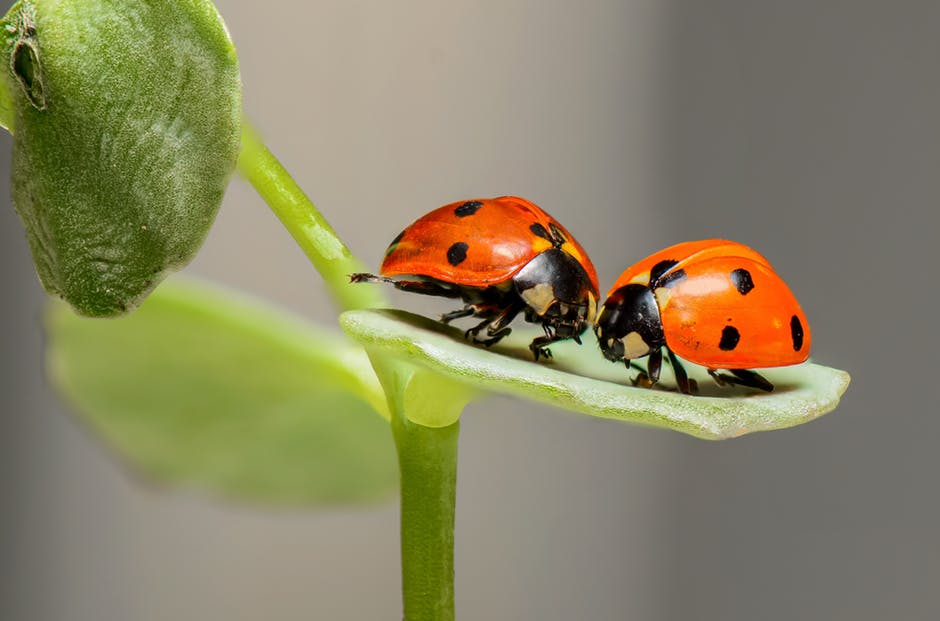Fascinating facts about Ladybugs that you need to share with your kids

There is no person on the planet who doesn’t likes Ladybugs or at least appreciates them. These charming little creatures are not only beautiful but also quite useful to have around. There are probably many things that you know about these little fellows. Or maybe you don’t? Check these fascinating Ladybug facts to refresh your knowledge or to learn something new. Let’s get started!
Ladybugs aren’t bugs!

You may think this is not logical at all, but it’s true. Ladybugs aren’t bugs, they are beetles. According to the entomologists, bugs and beetles are not the same. All the bugs belong to the group called Hemiptera, and all the beetles to the group called Coleoptera. The Ladybug is a member of the second group. In Europe, the Ladybug is known as the ladybird or lady beetle and has been for more than 500 years. In the States, the name became the Ladybug.
Lady refers to Virgin Mary
In the Middle Ages, the fields in Europe were threatened by pests, so the farmers were praying to the Virgin Mary to save their harvest. Soon, the farmers started seeing beneficial ladybugs in their fields, and the crops were miraculously saved from the pests. Of course, they called the beetle that saved them a Lady Beetle.
Ladybugs bleed from their knees

If you startle a Ladybug, it will release a weird-smelling liquid known as hemolymph from its legs, leaving a yellow stain. The Ladybug repulses predators in this way and avoids potential danger.
Ladybug’s bright colors warn predators
Insect-eating birds usually avoid bright colors, and they stay away from ladybug snacks. Red and black in combination means danger and poison, so the predators choose not to mess around with these cute beetles.
A Ladybug can eat more than 5000 aphids in a lifetime

Soft-bodied insects are the Ladybug’s favorite food, and over its lifetime they can eat more than 5000 aphids, bugs that harm plants. This is how the Ladybug became known as one of the most beneficial of field bugs. A hungry ladybug adult can munch up to 50 aphids a day. Farmers welcome ladybugs with open arms, and if they not already present in the field, people hunt them and bring them to their gardens.
Ladybug larvae look like a tiny alligator
If you see ladybug larvae without knowing what it is, you would think it’s a kind of a tiny alligator. They have long abdomens, spined bodies, and legs coming out from the sides. In this early stage, they have nothing in common with the ladybug we know. The larvae grow for a month and consume hundreds of aphids during its growing process.
They eat each other

If a ladybug runs out of aphids, it will eat whatever soft-bodied insect that pops up on the way. They will even eat their siblings, just to get the necessary protein for the day.
Ladybugs may lay both fertile and infertile eggs
You are probably asking yourself why would someone lay infertile eggs? Nature has an answer for everything, and all things happen for a reason. The infertile eggs are a ready food source for the larvae, and it helps them to grow faster. So the larvae hatch from the fertile eggs to eat the infertile ones. This sounds weird, right? Well, sometimes the ladybug lays an increased number of infertile eggs to provide more food for the larvae and increase their survival.
If you have any comments then please drop us a message on our Outdoor Revival Facebook page
If you have a good story to tell or blog let us know about it on our FB page, we’re also happy for article or review submissions, we’d love to hear from you.
We live in a beautiful world, get out there and enjoy it. Outdoor Revival – Reconnecting us all with the Outdoors.
